The bike industry is on an ever-marching procession of new cycling tech and innovation. Much of this progression is good, and ultimately makes our bikes more capable and fun to ride, but that’s not always the case. Our recent look at tech dead-ends is evidence of that.
However, bike brands do often get it right, and this is perhaps nowhere more apparent than with cross-country bikes, which now look drastically different to what we rode only ten years ago.
In what might be a case of chicken or egg, cross-country mountain bike racing has become more technical and faster – the testing Izu course at the 2020 Tokyo Olympics is testament to that – while the bikes have become more capable and, well, a darn sight quicker too.
Almost every aspect of cross-country mountain bikes has changed over the last decade, from longer and slacker MTB geometry that can hack it on technical downhills and rock sections while still being lightning quick uphill, to bars that are as wide as those on some of the best enduro mountain bikes.
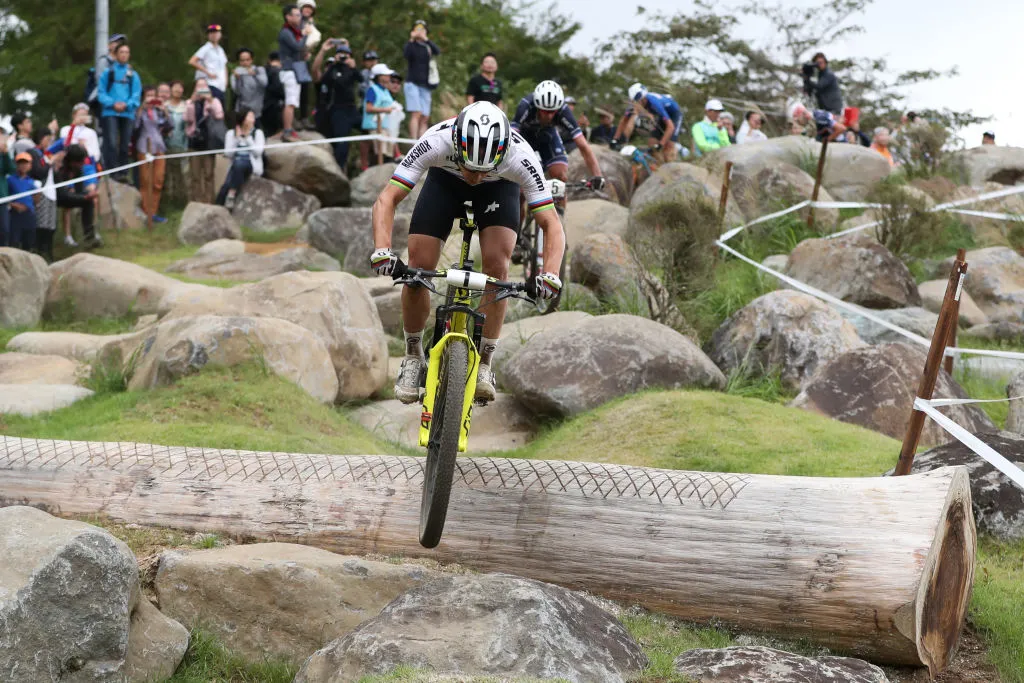
We can’t say we’re disappointed. These changes have made cross-country even more fun to ride and to watch, as well as in part paving the way for downcountry bikes, which combine the best bits of XC and trail bikes.
So, with all this in mind, here are six ways cross-country bikes have changed, and why this is a good thing for everyone who rides them. If you want to know more about XC bikes, make sure you check out our buyer’s guide to the best cross-country bikes.
1. Wheels
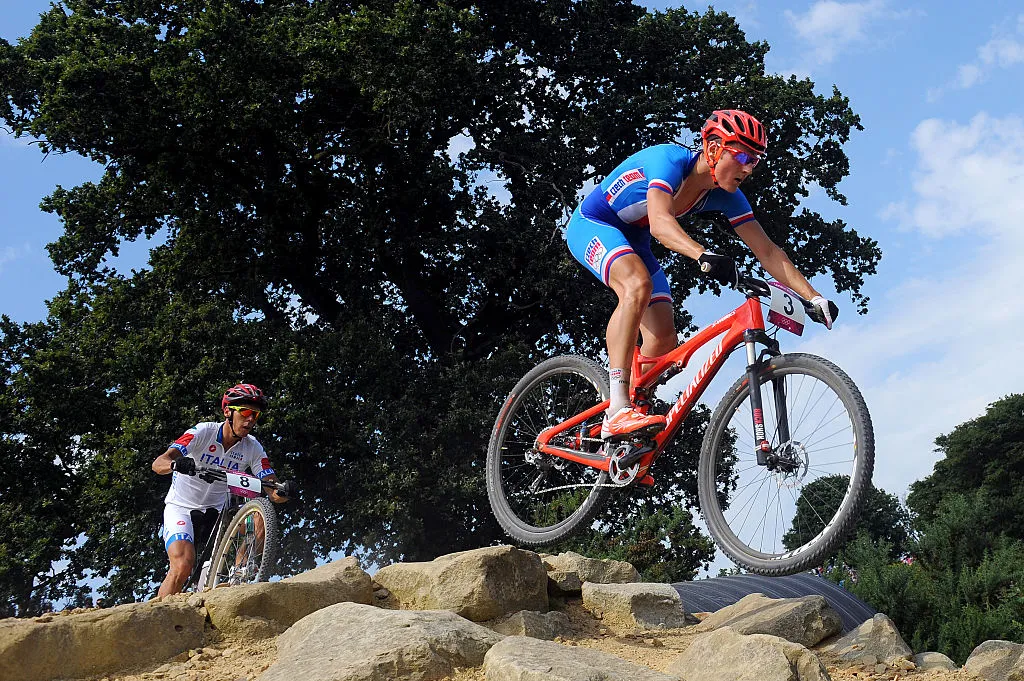
Perhaps the most striking place XC bikes have changed is the size of their wheels, with the top cross-country mountain bikes all using 29in wheels.
Cast your eyes back 10 years, and while many riders were starting to realise the benefits of 29ers, many were still doggedly sticking to the smaller, and up until then, standard size of 26 inches.
Now, this would also have been down to sponsorship requirements. If your sponsor didn’t make a 29er, then you couldn't ride one – even if you wanted to. But regardless, many riders were happy to stick with what they knew.
And, they had good reason. It took a while for the bike industry to get the geometry and componentry of 29ers right. Wheels could be flimsy and handling could leave a little to be desired, so it’s no wonder some riders were sceptical.
However, in 2011, Czech Republic’s Jaroslav Kulhavy was the first-ever rider to win a cross-country World Cup on a 29in bike. He then went on to win the 2012 London Olympic cross-country gold medal aboard a 29er (a Specialized S-Works Epic). From that point, 29in wheels gradually became the standard for XC racing.
Fast-forward to the present and most riders will agree on the benefits of 29in wheels for XC racing. They can roll faster, give greater traction and increase comfort.
2. Gearing

Another huge change among cross-country bikes – and mountain bikes as a whole – is the advent of mountain bike groupsets with one-by gearing, where there is one chainring at the front, paired with a wide-range cassette at the back, often with a small 10-tooth sprocket at one end and a huge 50-tooth sprocket at the other.
You don’t have to go too far back to see cross-country bikes with triple chainsets at the front. One member of the BikeRadar team remembers their first cross-country bike, a Scott Scale, coming with a triple chainset in 2012.
Triple and double chainsets may have given riders a good gear range and neat spacing for a perfect cadence, but they were also trickier to maintain and keep in good working order.
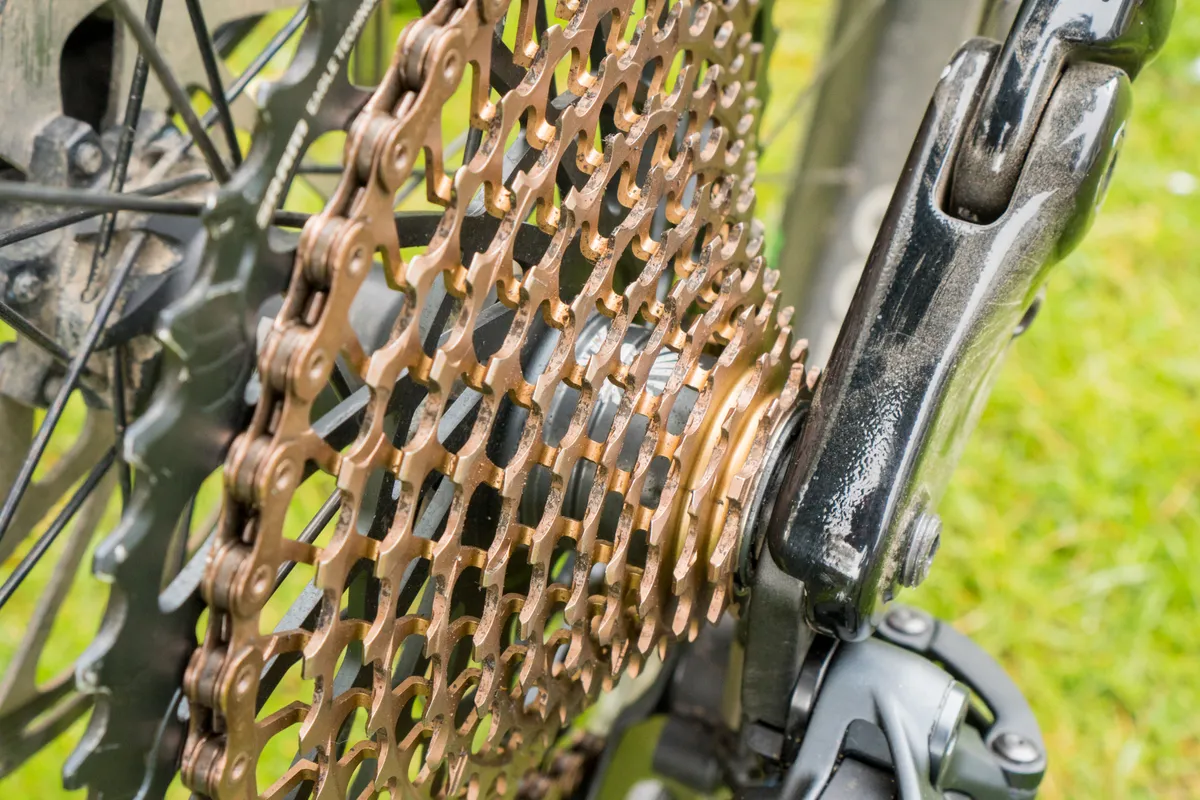
Just like any innovation, many riders weren’t so sure when SRAM released its XX1 one-by gearing in 2012, as conventional wisdom dictated that 11 gears wouldn’t really cut it on a cross-country course.
But gradually, pros and amateurs alike began to realise the benefits of one-by. The gearing system was easier to install, easier to maintain and could save weight, while also keeping your bike looking clean. It also enabled bike manufacturers to build better full-suspension bikes, as the lack of a front derailleur freed up space for the rear suspension.
The jumps between gear ratios may have been a bit bigger, but it turns out nobody minded or in fact needed the tight spacing a double or triple chainset afforded.
Go to any cross-country race today and we suspect it’ll be one-by gearing on every bike, and that’s only a good thing in our eyes.
3. Geometry
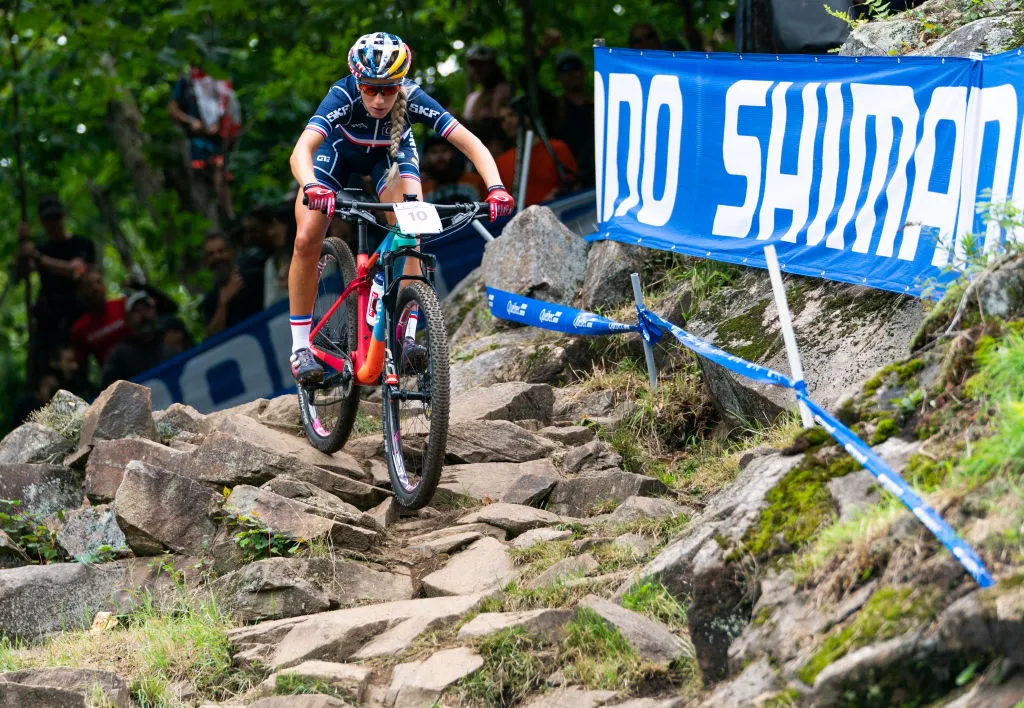
Geometry is a great example of how bike tech has kept up and progressed with the demands of the discipline. As cross-country racing has become gnarlier and more technical, brands have evolved by making their bikes better for descending, while still maintaining climbing performance.
A prime example of modern cross-country bike geometry is the latest Specialized Epic, which encapsulates how many cross-country rigs have evolved.
The Epic is perfectly suited to the high-speed and technical demands of modern-day cross country. It has a relatively slack 67.5-degree head angle, along with 470mm of reach in a size large and a steep(ish) 75.5-degree seat angle. All good things when it comes to pedalling and descending fast.

The 2012 Epic looks outdated when compared to its modern-day counterpart. The 70.5-degree head angle would have made the bike sharp in the turns, but it would also make it less confidence-inspiring on the descents.
The reach is also shorter at 438mm, and the seat angle is a little slacker at 74 degrees. That slacker seat angle may have made it harder to get an efficient position for pedalling over the bottom bracket.
Equally, the new Cannondale Scalpel is another XC bike that has seen its geometry evolve. The head angle is 1.5 degrees slacker than the previous model, while the seat angle is one degree steeper.
It’s worth noting that we’re painting in broad strokes here. There are lots of other figures and factors that influence how a cross-country bike handles beyond the geometry numbers we've quoted here, but it’s undeniable that modern XC geometry has evolved, making these bikes less shy when it comes to downhill riding.
4. Tyres

We suspect any riders racing the 2021 Olympics would be pretty upset if you told them they would have to race on narrow rubber. But rewind nine years and skinny tyres were pretty common, with 2012 champion Kulhavy’s S-Works Epic coming with 2in tyres.
Over the last decade, the wider tyre trend has played out across the whole of the cycling spectrum, from road riding to XC, and now the best mountain bike tyres are all pretty beefy.
The conventional wisdom used to be that narrower tyres would roll faster and save you a bit of weight. Both are important in a cross-country race, but while a narrower tyre may save you some grams, a wider tyre will be better in almost every other way.
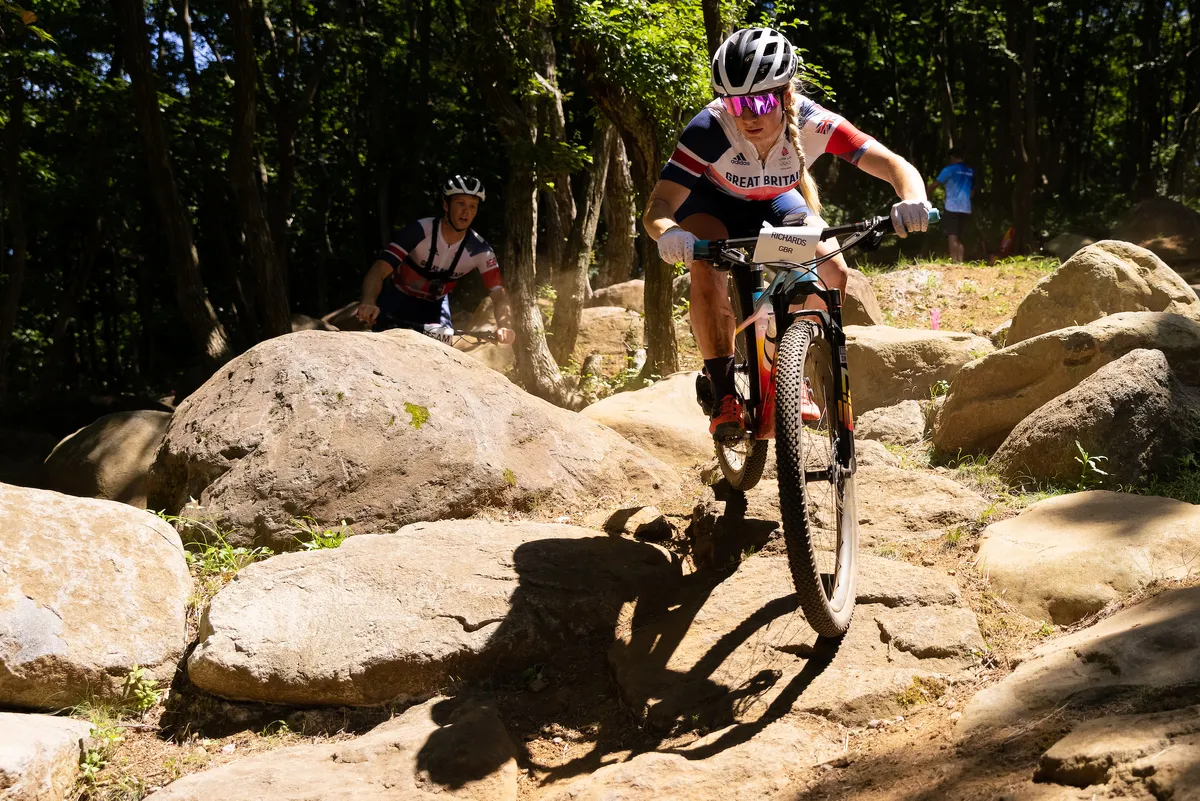
They’re able to roll faster, will provide more grip, offer more comfort, and can reduce the chances of an untimely puncture. All good things for the budding cross-country racer.
There’s still some debate over which tyre is actually fastest, and there’s probably no definitive answer to that question. But for now it looks like most riders go for either a 2.3in or 2.4in tyre for XC racing.
We’ve even done our own experiments into tyre width, exploring the fastest tyre size for mountain biking and the fastest tyre volume for cross country. If you’re tinkering with tyre size yourself, make sure you also read our guide to MTB tyre pressure.
5. Handlebars

As someone once said in a film about spiders, “with great power comes great responsibility”, and this is true of the modern cross-country bike.
Your optimised tyres, geometry and wheel size have given you the opportunity to travel faster than ever. But you need to be able to control that power – and for that, you’re going to require wider handlebars.
Once again, you don’t have to go too far back to see bikes coming with handlebars narrower than 700mm. Look even further back and they even start to go under 600mm.
In this age of wide bars, you might wonder why would anyone ride such narrow widths? Well, the speeds were often slower back then, and the downhills less technical. Plus, it’s just what people always used, so why change?

Fortunately for all of us, as speeds have gone up, so has the width of our handlebars, with many XC bikes coming stock with either a 740mm or 760mm bar, unthinkable a decade ago.
A bit like wider tyres, wider handlebars have become the standard across the whole mountain biking spectrum. They allow you more control on technical sections and can improve bike fit, plus some riders think the extra width helps open up their chest for breathing.
Either way, it’s another example of how tech has moved on in the last 10 or 15 years.
6. Suspension

Suspension has come on leaps and bounds over the last decade or so. From Fox’s electric lockout, to lighter and plusher shocks, there’s no doubt the bikes of today are much more at home on steep or technical terrain.
Those improvements in suspension technology, along with the fact that courses are more technical than ever, mean you’re more likely to see a full-suspension bike at a top-level XC race than a hardtail.
Hardtails were well-suited to the courses we used to see in cross-country a decade or more ago. That’s all changed now. While Albstadt is one of the less technical courses on the current World Cup circuit, and poses the question of whether to choose a hardtail or full-suspension bike (Victor Koretzy won the 2021 men's elite race on a hardtail but Loana Lecomte claimed the women's race on full-suspension), most riders now opt for suspension at both ends for most races.
Don't get us wrong, there's still a place for lightning-fast hardtails in XC – the BMC Twostroke, launched last year, is evidence of a progressive cross-country hardtail – but full-suspension bikes now rule the roost.
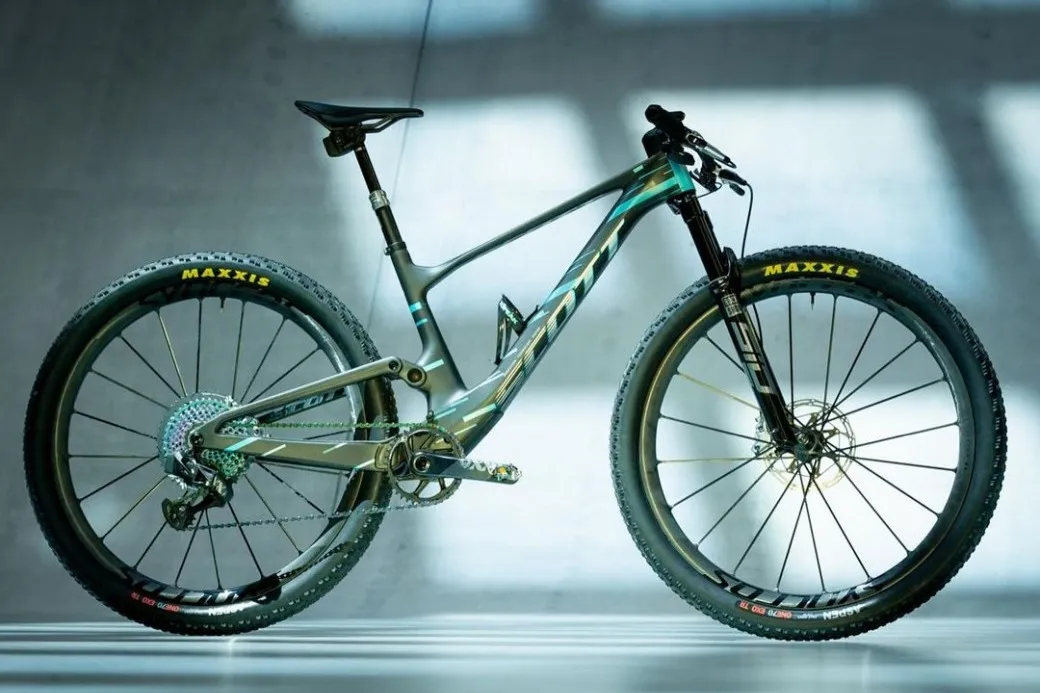
Travel is getting more progressive, too. Take the new Scott Spark RC – the bike of choice for Nino Schurter and Kate Courtney. It has 120mm of travel at both the front and rear, when we’re much more used to seeing 100mm.
Where else have we seen evolution in suspension tech? Take Specialized’s patented Brain suspension. The design works using an inertial valve, which automatically locks the suspension out for you on smooth terrain. Hit a bump, and the valve quickly opens up the suspension again. In principle, it’s a brilliant idea, but in practice, early iterations gave the Brain a somewhat marmite following.
The biggest complaint was the large clunk, or knock, that riders felt when the valve opened up again. You also couldn’t adjust the sensitivity of the Brain on the fly, which was no good if you were riding on varied terrain.
However, just like everything on this list, Specialized have incrementally improved the Brain over the years. It can now be adjusted on the fly, and the knock, while still being there, is much softer than previous generations.
Ultimately, the evolution of suspension is a prime example of how today’s XC bikes are designed to be more capable and versatile than ever.
